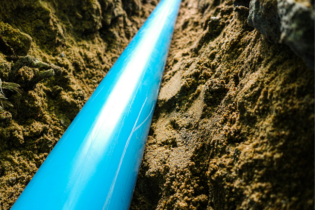Recently Cape Town has been hard hit by unprecedented heavy rain. This led to Cape Town’s dam levels increasing by 20% in a week and currently stands at 95,2%. Last year this time, dam levels were at 99%. Regardless of the status of our dams, the City is continuing on its mission to build a water-secure future for its residents.
In the face of climate change and unpredictable rain, the City’s Water and Sanitation Directorate is continuing to invest in Cape Town’s New Water Programme (NWP) to help provide a resilient water-secure future for residents. ‘We appreciate the heavy rain that has been filling our dams but we cannot allow this to give us a false sense of water security for the future. Cape Town has learnt that we cannot solely rely on dams for water security so the City is busy investing in its New Water Programme. This includes projects such as desalination, groundwater schemes and reuse, which are at various stages of progress. Collectively through these projects, we are working towards increasing supply by an extra 300 million litres of new water everyday by 2030. ‘This is part of the City’s long-term Water Strategy to help reduce Cape Town’s dependence on rainfall and dam storage as our primary water supply to navigate future climate shocks and droughts. ‘This is over and above the current interventions to ensure optimal water use and will assist in enabling Cape Town to become resilient to climate change,’ said the City’s Mayoral Committee Member for Water and Sanitation, Councillor Zahid Badroodien. The NWP includes:- Water Re-use: Implementing purified recycled wastewater, adding 70 million to 100 million litres a day.
- Desalination: Extracting salt from seawater to yield 50 million to 70 million litres a day.
- Clearing of invasive plant species and various management interventions: Harnessing water from rivers to contribute an additional 30 million litres a day.
- Groundwater: Drilling boreholes and tapping springs securing over 100 million litres a day.
 ‘Our residents are also key partners in Cape Town’s water journey so we thank them for contributing to building our water-future, be it from paying their water bills to making water-wise decisions in their daily lives. While the City is investing in the NWP, residents are reminded to be water-wise at all times, regardless of the season or the status of our dams,’ said Councillor Badroodien.
Frequently Asked Questions and Answers:
‘Our residents are also key partners in Cape Town’s water journey so we thank them for contributing to building our water-future, be it from paying their water bills to making water-wise decisions in their daily lives. While the City is investing in the NWP, residents are reminded to be water-wise at all times, regardless of the season or the status of our dams,’ said Councillor Badroodien.
Frequently Asked Questions and Answers:
- What does my water tariff cover?
The water tariff is made up of both a usage (or variable) charge, which depends on how much water is used, and a fixed basic charge.
This tariff is used to recover the cost of supplying a reliable water service. This includes the operational cost associated with the establishment of major infrastructure catchment and treatment of water, operation of the distribution systems as well as repairs and maintenance of infrastructure such as:- 11 319km of water pipes
- 12 water treatment plants
- 180 reservoirs
- More than 9 266km of sewer pipes
- 490 wastewater pump stations
- 92 water pump stations
- 23 Wastewater Treatment Works
- 296km of treated effluent pipes and 11 treated effluent pump stations
- Cape Town’s dams are more than 90% full. Why do we still need to pay a fixed basic charge as part of our water tariff?
 The fixed basic charge creates stability and reliability in the Water and Sanitation Directorate’s revenue forecast which is used to fund the directorates operating expenditure and the operational cost associated with the Capital Expenditure Programme. This includes projects such as the New Water Programme (NWP), the Water Pipe Replacement Programme and other projects that will help build a resilient service.
Note:
The fixed basic charge creates stability and reliability in the Water and Sanitation Directorate’s revenue forecast which is used to fund the directorates operating expenditure and the operational cost associated with the Capital Expenditure Programme. This includes projects such as the New Water Programme (NWP), the Water Pipe Replacement Programme and other projects that will help build a resilient service.
Note:
- The fixed basic charge remains in place. This charge is not a penalty or a surcharge.
- Indigent registered households do not pay the fixed basic charge part of the water tariff, and continue to receive an allocation of free water and sanitation.
- Can we expect to pay a lower water tariff now that Cape Town’s dams are more than 90% full?







